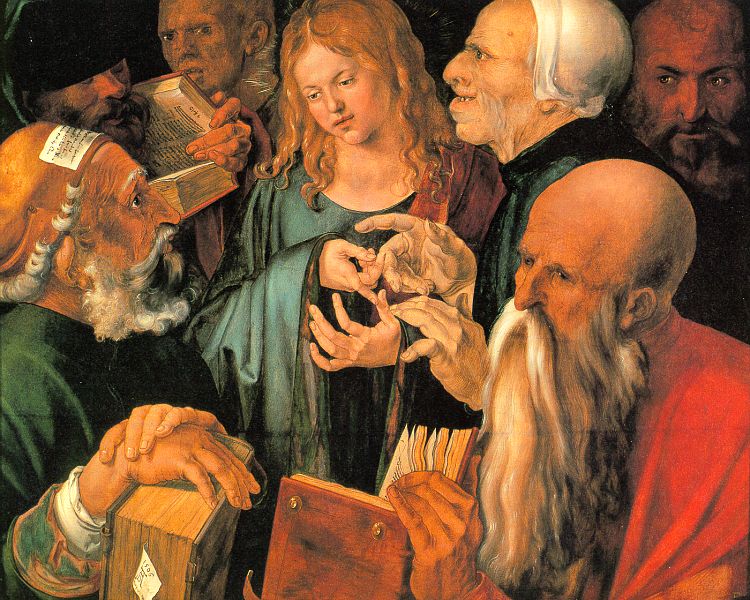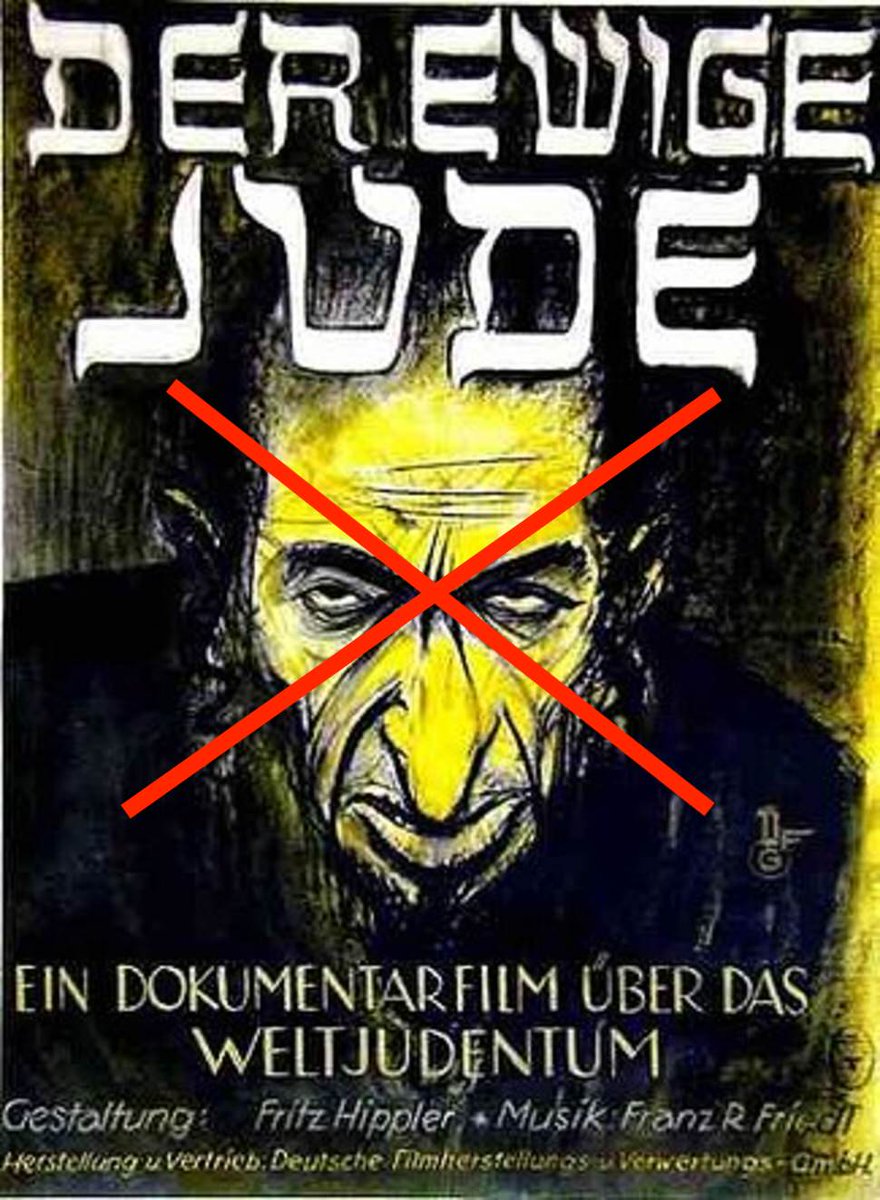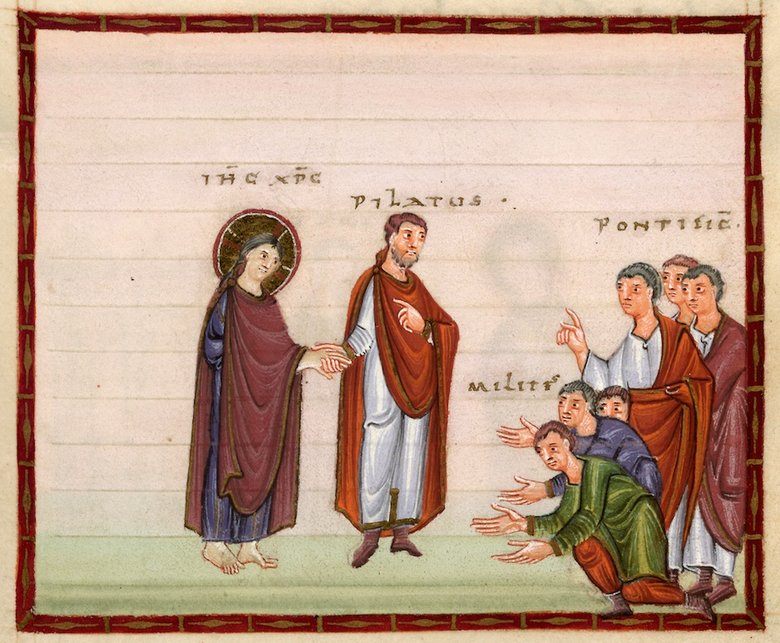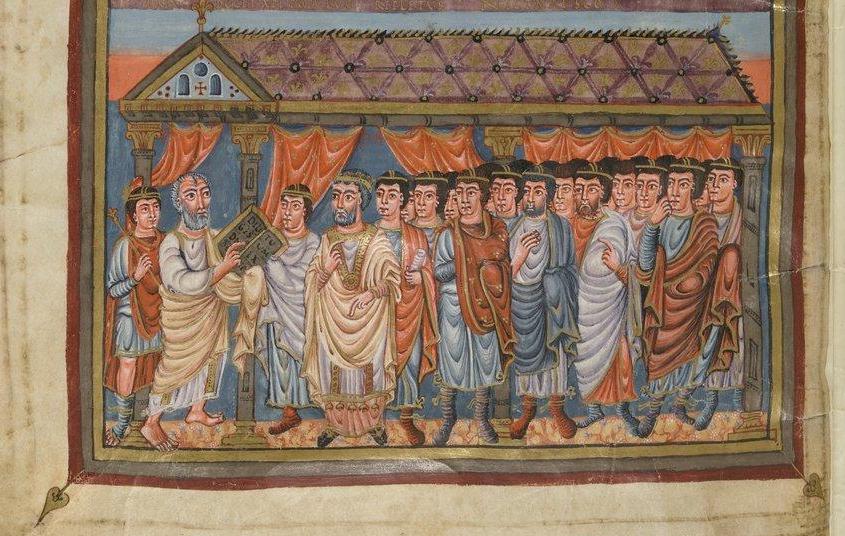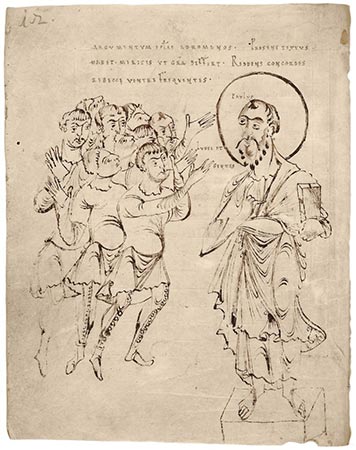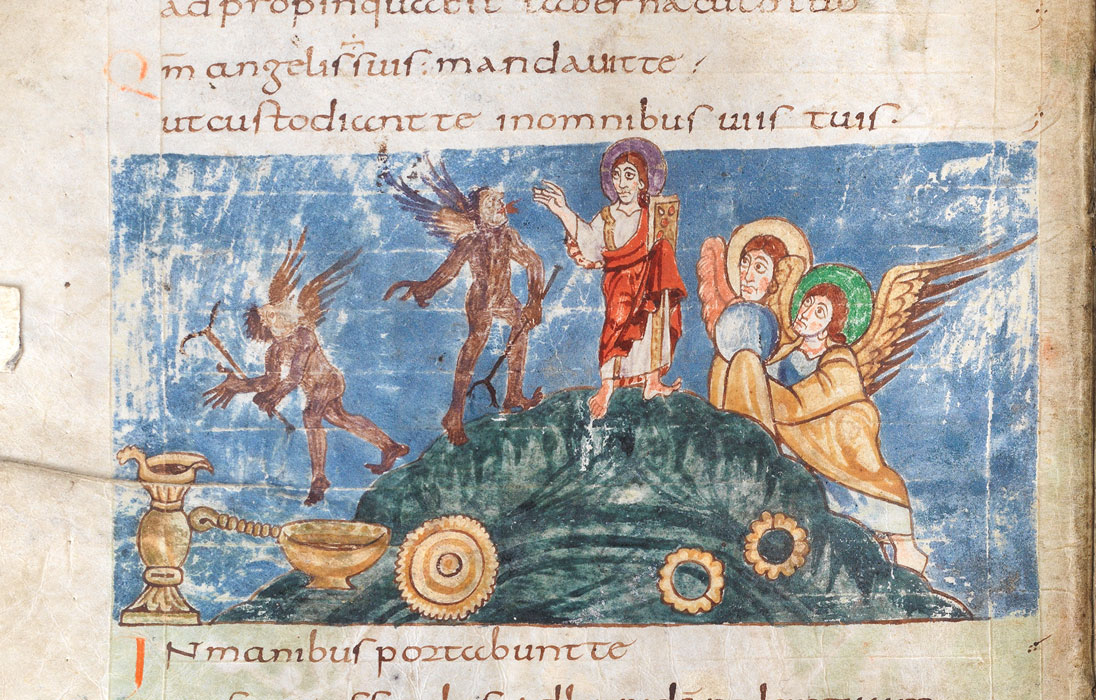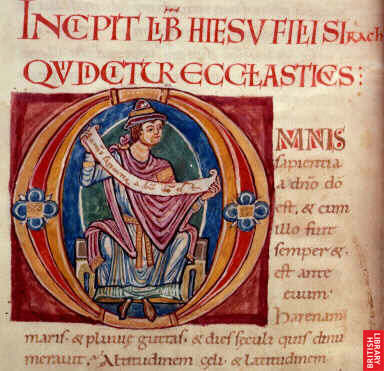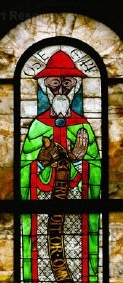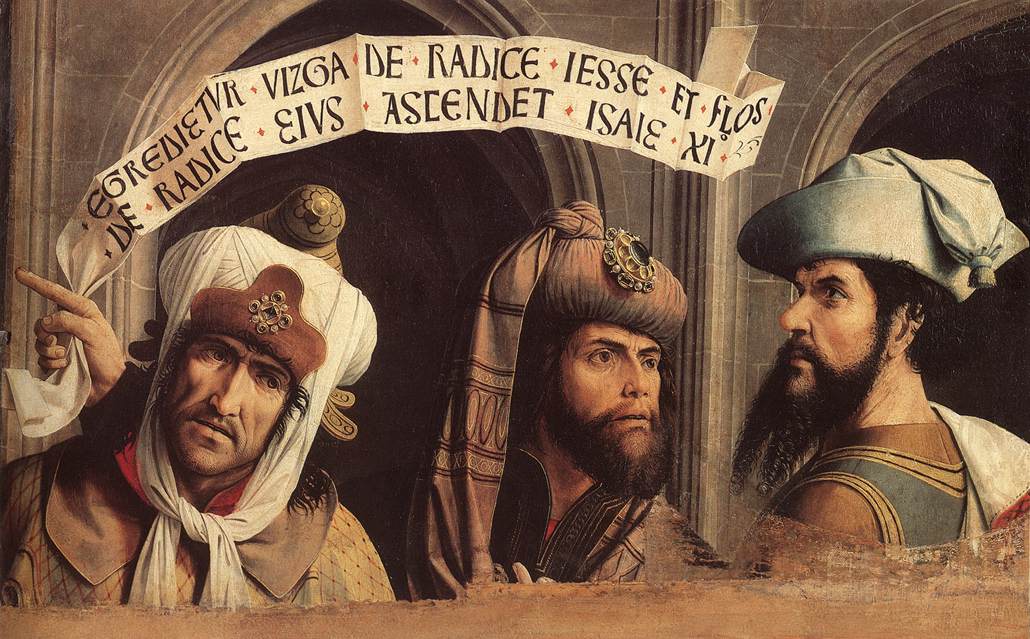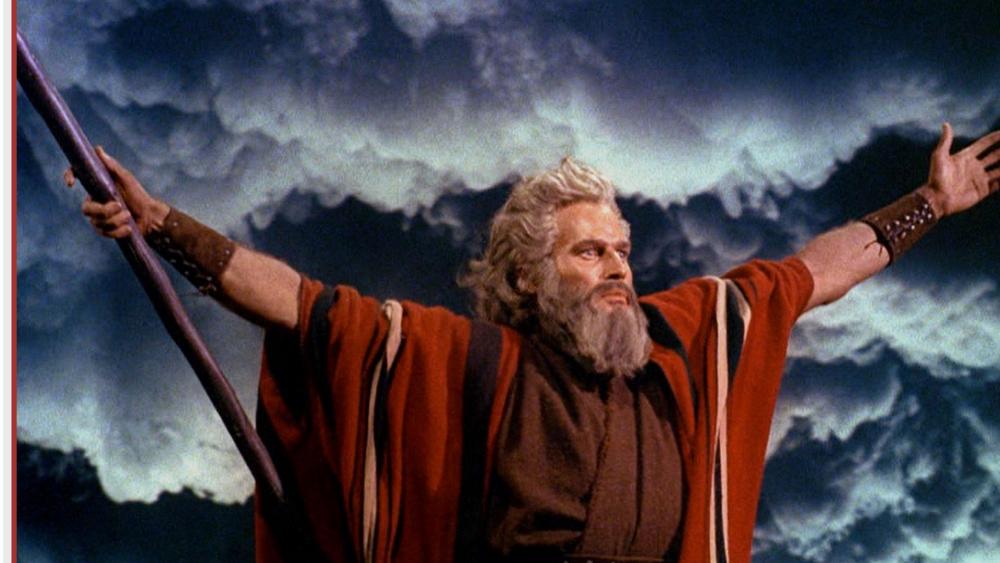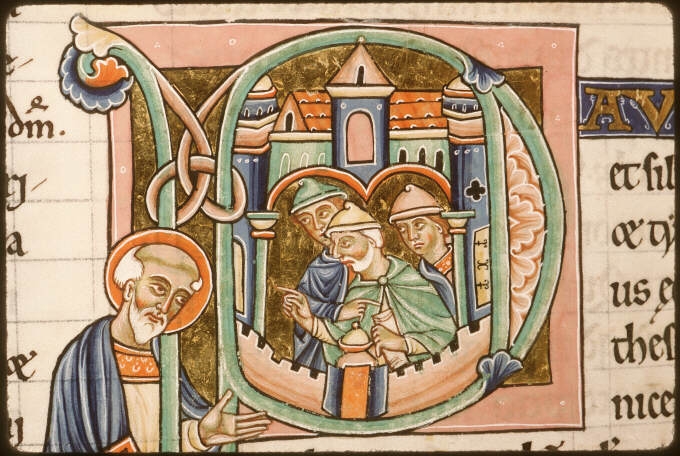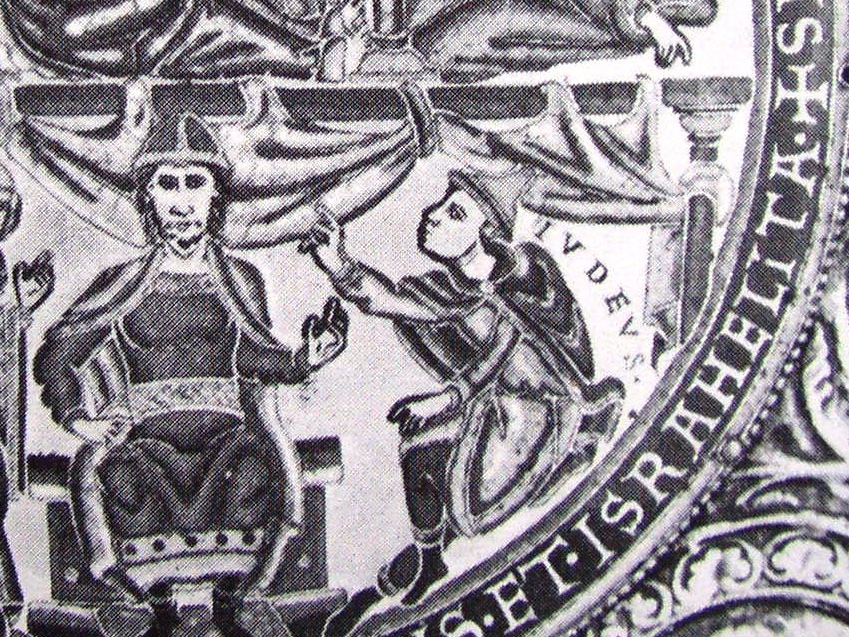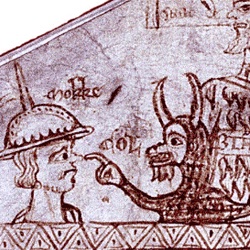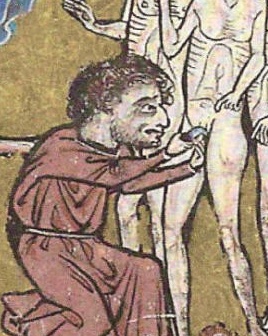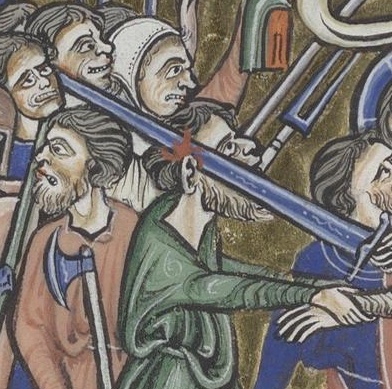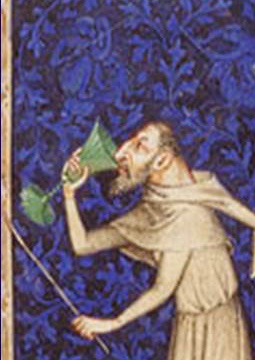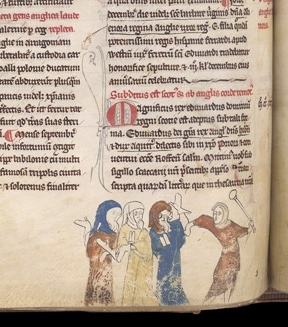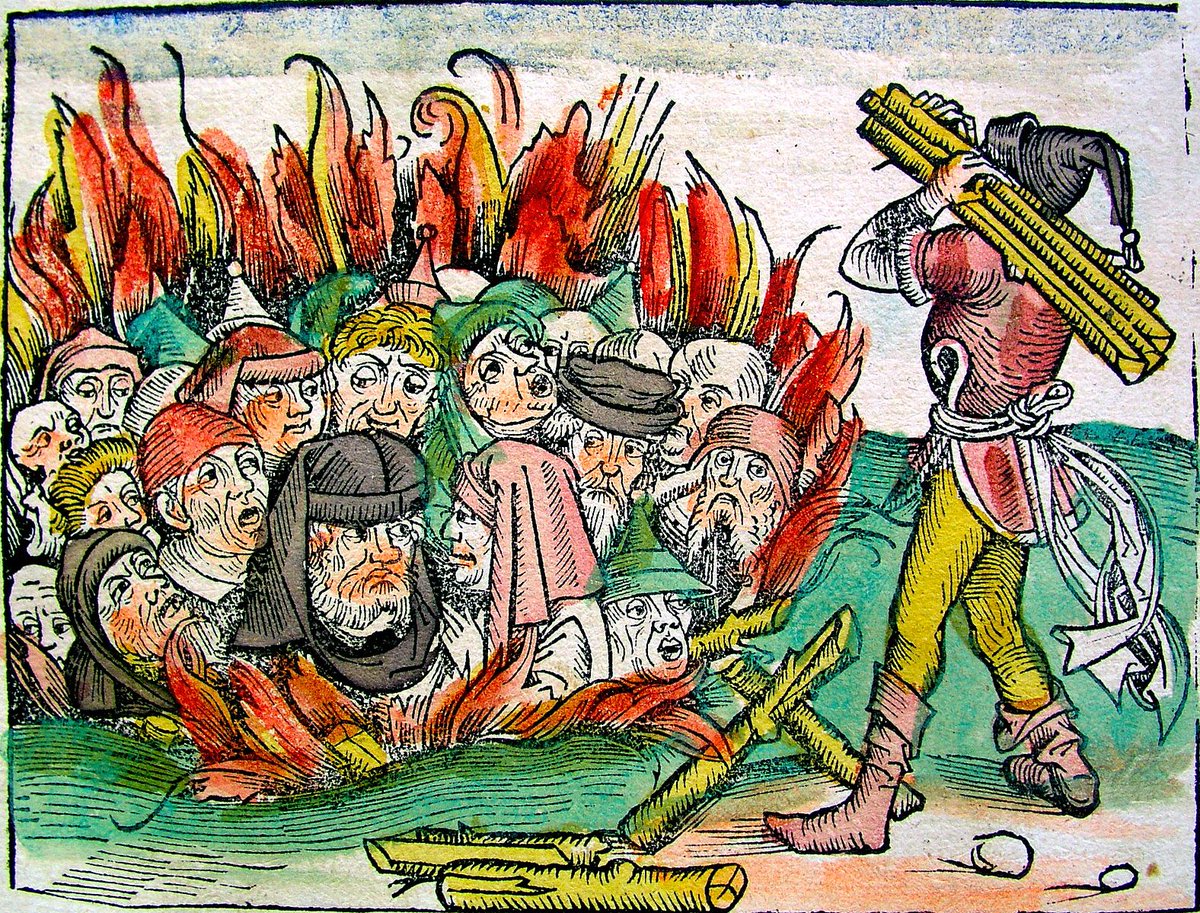Good morning #Twittistorian friends! This is @sliptonmedieval; This week I am tweeting about #Imagesashistory. Yesterday we looked at medieval clerics& #39; fears that misread images could create heresy. Today: how images helped create hate and #antisemitism. Dark stuff.
My main message (as sung in South Pacific): hate has to be carefully taught. Images that portrays group members as hideous, dangerous, different do this very powerfully, as this heinous Nazi poster of "The Eternal Jew" shows. (Hate images will be X& #39;d out.)
BUT it takes time and work to make certain features have "meaning." The work of creating a hateful anti-Semitic caricature took centuries. In this tenth-century manuscript, even the Jews responsible for arresting Jesus look no different from Romans or Jesus himself.
Or in this image from ca. 900 of Paul preaching to a mixed group of Jews and gentiles, the Jews& #39; stubbornness is displayed via gesture and stance, not facial or physical features.
Certainly bestial, exaggerated, and ugly features -- especially a long nose -- appeared in early medieval Christina art. But they were used to indicate moral turpitude. not religious or ethnic identity. See fx the bestial devil from the Stuttgart Psalter of ca. 830.
SO for centuries, Xian opposition to Jewish religious ideas was NOT mapped onto to Jewish bodies. Jews only began to be visually identifiable in Xian art ca. 1085. And then, it was only Hebrew prophets, marked as ancient (and so wise tho also out-dated) by antique hats & scrolls.
This depiction of Hebrew prophets -- with antique pointed hats and scrolls, and also often beards -- as wise, old, but outdated b/c replaced with Xian grace became standard from ca. 1120 until today.
Of course, none of these qualify as images of hate. That trend begins slowly. First, the antique signs used for prophets started to be used of other Jews. NOT b/c Jews dressed like that. But to make Xian viewers see Jews as different, outdated wrong. Here, rabbis argue with Paul.
Then, even contemporary (i.e., medieval) Jews start to be shown wearing antique garb. Again, NOT b/c they actually did. But to mark them as different, alien, obsolete. This "Judeus" is a friend of the Christian count to whom he speaks.
Then other signs being appearing on Jews& #39; faces: the long noses and scowling expressions once seen on the devil. As with the devil, these signs marked (alleged) moral turpitude, not ethnic identity. Here a (courtly blond) Jew& #39;s nose mirrors that of the demon who tweaks it.
But as Gothic art became more naturalistic, and Xian clerics sought to distance Xians and Jews more and more, these artificial bestial signs of evil became "naturalized." The anti-Jewish caricature was born.
Important! The anti-Jewish caricature was NOT simply an exaggeration of "how Jews looked." Some Jews may have resembled it. Many Jews did not. Some Xians may have resembled it. But noses, beards, etc. have no meaning until they are assigned meaning.
These features came to be assigned meaning slowly, over many centuries. Xians had to be taught to think of Jews as different. Pictures did a great deal of that work. Laws forcing Jews to dress distinctively came AFTER images showing Jews dressing distinctively.
Texts claiming that Jews looked different came AFTER images showing Jews looking different.
And violence against Jews accelerated rapidly AFTER images showing violence against Jews became common.
Images alone didn& #39;t create anti-Semitic hatred, of course. But they helped mightily, by portraying Jews as different & bestial, & stirring emotions of revulsion and fear. We& #39;re still feeling the effects today. Tomorrow: caricature& #39;s modern afterlife. -- sl @sliptonmedieval

 Read on Twitter
Read on Twitter